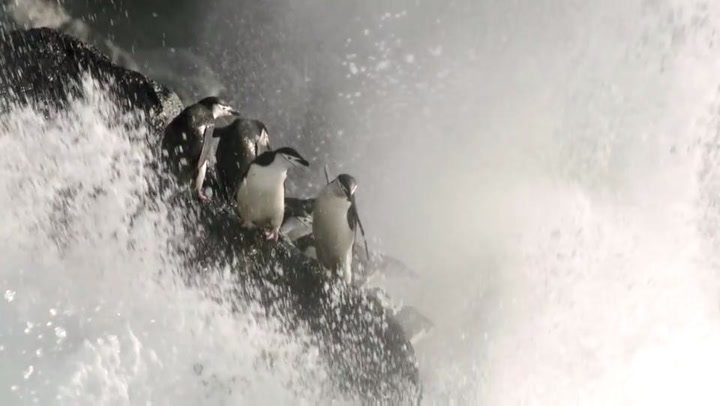Planet Earth 2 will be like no nature doc seen before, says David Attenborough

Your support helps us to tell the story
From reproductive rights to climate change to Big Tech, The Independent is on the ground when the story is developing. Whether it's investigating the financials of Elon Musk's pro-Trump PAC or producing our latest documentary, 'The A Word', which shines a light on the American women fighting for reproductive rights, we know how important it is to parse out the facts from the messaging.
At such a critical moment in US history, we need reporters on the ground. Your donation allows us to keep sending journalists to speak to both sides of the story.
The Independent is trusted by Americans across the entire political spectrum. And unlike many other quality news outlets, we choose not to lock Americans out of our reporting and analysis with paywalls. We believe quality journalism should be available to everyone, paid for by those who can afford it.
Your support makes all the difference.The trailer for Sir David Attenborough’s Planet Earth II was nothing short of jaw-dropping, featuring footage of sloths swimming, monkeys leaping between rooftops and birds of prey swooping within inches of cacti.
If it looked more amazing than anything seen on previous Attenborough documentaries, that’s because it is.
“I can say that the technology and the shots are unparalleled,” Sir David told the Guardian. “You couldn’t do those shots 10 years ago.”
Planet Earth II involved 117 filming trips in 40 countries, and the latest UHD and HDR formats were used in tandem with ultra-lightweight cameras and drones. All this kit enabled the crew to capture wildlife in a more crisp and immediate way than ever.
“Visually, where Planet Earth took an almost God-like perspective and said ‘Let’s look down on the Earth and see the scale of the planet’, what Planet Earth II is doing is saying ‘Let’s get ourselves into the lives of the animals, and see it from their perspective,’” producer Mike Gunton said.
“The visual signature of the series is that you feel like the camera is with the animals. It’s very fluid, very active. For example, you might see this wonderful lemur leaping through the forest. Normally when we’d film that, we’d be standing back observing it, but here the lemur almost jumps over your shoulder and as it’s jumping over your shoulder, you’re with it - the camera is running with it!”
By using remotely operated cameras, the team were able to film animals just inches away.
They were “strategically placed in locations it would be impossible to put a cameraman,” Gunton added.
“The animals almost operate the cameras themselves! When they walk by, the camera is triggered to start and films them.
“The snow leopard is a good example of how this has given us a new perspective. On Planet Earth, the snow leopard was filmed on the end of a telephoto lens about a kilometre away. What we’ve done is go back to the same location, and stake it out with dozens of these remotely-operated cameras.
“So instead of the camera being far away from the animal, it’s now three feet away. Of course, you could never do that before, because the animals would never come that close to a human being.”
The first of six Planet Earth II episodes, ‘Islands’, will be broadcast on BBC One at 8pm on 6 November.
'Islands' synopsis:
Remote islands offer sanctuary for some of the planet's strangest and rarest creatures. The rare pygmy three-toed sloth enjoys a peaceful existence on an idyllic Caribbean island, while nesting albatross thrive in predator-free isolation.
Join our commenting forum
Join thought-provoking conversations, follow other Independent readers and see their replies
Comments